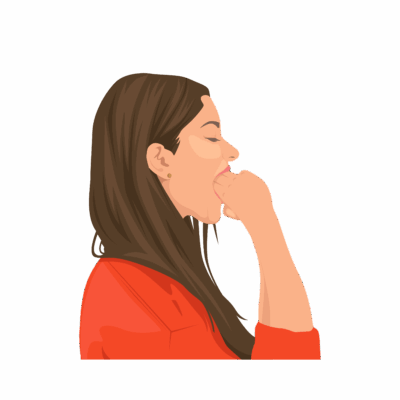Three Knuckle Test
The Three-Knuckle Test is a quick functional screen used to assess mandibular opening (jaw mobility, or mouth opening range of motion). It is commonly used for clients presenting with jaw pain, clicking, restriction, or complaints suggestive of temporomandibular joint dysfunction (TMD).
How the Test is Performed
-
Client Position: Seated or standing upright.
-
The client is instructed to open their mouth as wide as possible.
-
The client (or therapist) then attempts to insert the flexed proximal interphalangeal joints of their own non-dominant hand (‘knuckles’) vertically between the upper and lower anterior teeth.
-
The number of knuckles that can fit (usually up to three) is noted:
-
Three knuckles = Normal functional opening.
-
Two or fewer knuckles = Possible restriction in opening, suggestive of hypomobility, TMD, muscle spasm, or internal derangement.
-
Clinical Significance
-
Normal: The ability to fit three of the client’s own fingers (proximal interphalangeal joints) between the incisors suggests normal mandibular range of motion.
-
Restriction: Fewer than three knuckles may indicate joint hypomobility, muscle spasm, capsulitis, disc displacement, or other intra-articular pathology of the TMJ.
-
Excessive opening (greater than normal) may occasionally indicate TMJ hypermobility or ligament laxity.
Assessment
-
Use this test for clients with:
-
Jaw pain, clicking, popping, limited opening, chewing problems, or suspected TMD.
-
Headaches, neck pain, and postural complaints that may relate to TMJ mechanics.
-
-
Document:
-
Number of knuckles/width achieved.
-
Any pain, deviation, or crepitus with opening.
-
Side-to-side differences and symptoms produced during the test.
-
-
Use findings to track progress over time and response to treatment.
Treatment
-
If restricted:
-
Incorporate myofascial release, gentle soft tissue work, and intraoral techniques (if within scope of practice and with advanced training/consent) for jaw, masseter, temporalis, and pterygoid muscles.
-
Address related neck and postural dysfunction, as cervical and jaw mechanics are often linked.
-
Educate on jaw relaxation, avoidance of parafunctional habits (e.g., teeth clenching, gum chewing), and gentle jaw mobilization or stretching exercises as appropriate.
-
-
If hypermobile, focus may be on stabilization, education, and avoidance of excessive mouth opening.
Safety and Referral
-
Refer to a dental, medical, or orofacial pain specialist for:
-
Persistent or worsening restriction
-
Significant deviation, locking, or pain during jaw movement
-
Associated systemic symptoms or trauma
-

